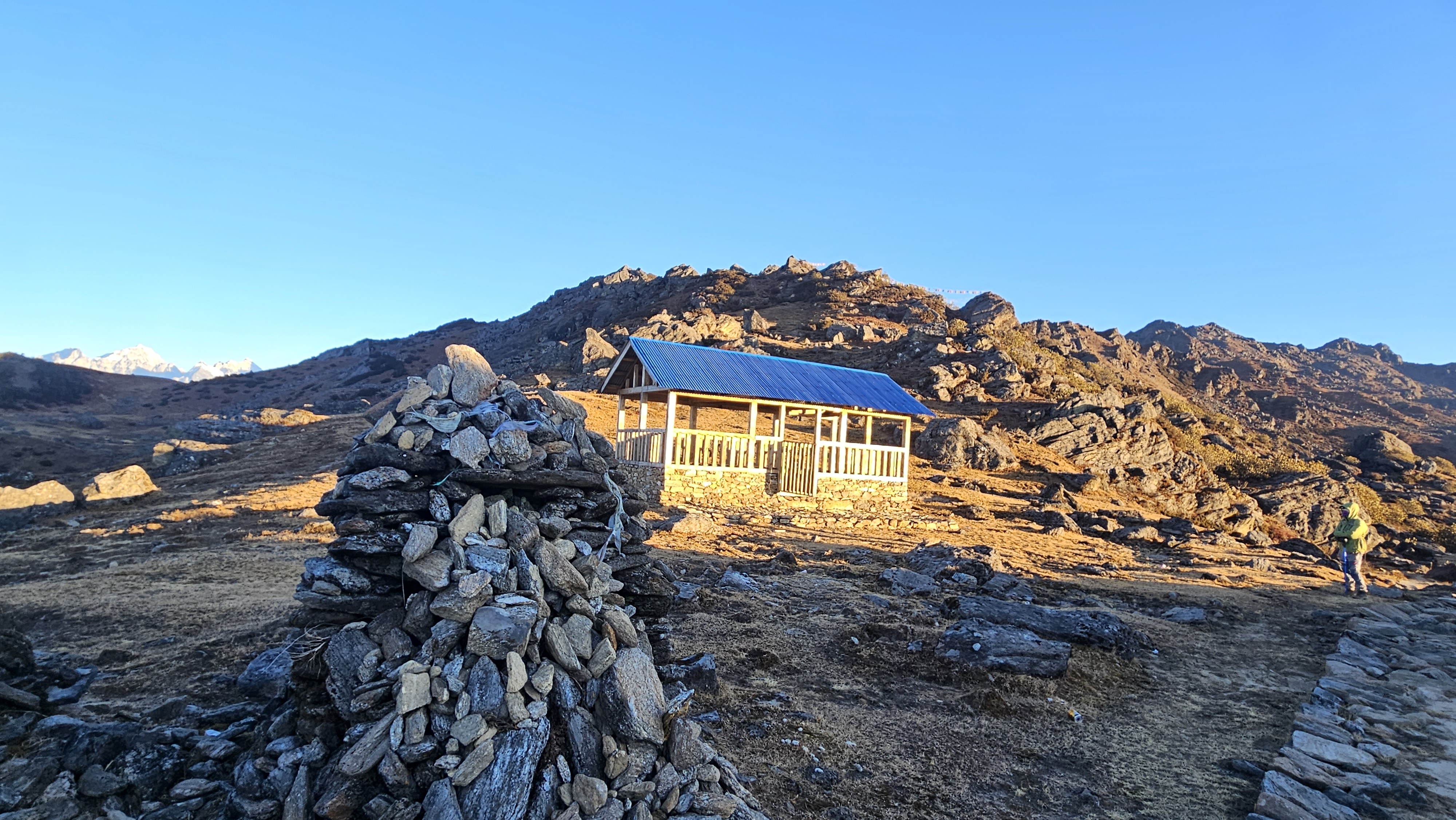Bhairab Kunda, located in Bhotekoshi Rural Municipality-1, Sindhupalchowk district, north-east of Kathmandu Valley, is a newly opened trekking destination for domestic and international travelers. Despite being close to Kathmandu Valley, Bhairab Kunda has not gained much attention, mainly due to geographical difficulties. Situated at an altitude of 4,250 meters, the lake offers stunning views of Jugal Himalayan Range and Gaurishankar Himalayan Range.
According to Hindu mythology, Bhairab Kunda, a pilgrimage and spiritual site for both Hindus and Buddhist, is believed to be the place where Lord Shiva created the sacred lake by thrusting his trident into the ground. Known for its breathtaking natural beauty, tranquil atmosphere and religious significance, the Bhairab Kunda trail leads to spellbinding mountain vistas, stunning alpine landscapes and ethnic villages.
A good friend of mine introduced this place to me and told the historical and mythological stories about this place. “Have you ever seen a frozen lake?” my friend asked me. I said no. And she proceeded to tell me that the lake will be frozen in February. The way she described the place piqued my curiosity. Upon reaching home, I started searching for the videos of Bhairab Kunda on YouTube. I was fascinated by the blue lake with mountains surrounding it. I also learned that the trek to Bhairab Kunda can be completed in two days.

The next day, I made a plan to visit Bhairab Kunda with my friend. Another friend also decided to join us on the journey. We bought some essential things needed for the trek. The same week, on Friday, we left Kathmandu for Sindhupalchowk at 11:30 am. We had two routes to go to Sindhupalchowk—one from Dhulikhel and another from Nagarkot. We decided to take the Nagarkot route, as it would be shorter for us to travel from Boudha. We were excited for the journey, as we were taking our motorcycles this time. Fortunately, the weather was on our side; it was a beautiful day and the landscapes en route were mesmerising.
We stopped for lunch by the riverside at Sukute after riding for nearly three hours. The next spot we stopped on that day was the Last Resort. We rested there for a while and had some cold drinks. Before leaving Kathmandu, we had information that the road would be nice and smooth till Daklan and we had to go off-road for around 40 km. The off-road journey was bumpy, slippery and dangerous.

We reached Listi at around 6 pm, and it was getting dark. We had to take extra caution and be careful riding in the dark. The plan was to reach Chokor Mokor, but when we reached Bagam at 7 pm we were knackered. A hotel owner at Bagam suggested that we spend the night at his place, as the road ahead was not good for traveling at night.
But we decided to press on. The road was treacherous. At some sections, we had to push our bikes. Although we were tired, we had a perfect night sky; countless twinkling stars above us.

We reached Chokor Mokor where Pasang dai, the tea house owner, was waiting for us. After keeping all our belongings in our room, we went to the kitchen to warm ourselves by the fire. We met three other people there. We had a chat with them for some time and had our dinner.
The cold was intense—water turned to ice almost instantly. Pasang dai explained the severe water shortage in the area, mentioning that he had to pay Rs 8,000 for a 500-liter tank of water. The lack of electricity and proper toilets added to the challenges.

That night, one of our fellow travelers suffered from altitude sickness and had to be taken to a lower elevation. Early the next morning, one of our friends also experienced breathing difficulties and began vomiting. After administering medication and ensuring he was stable, we started our hike to Bhairab Kunda at 6 am. The three-hour trek on stone stairs led us to the frozen lake, surrounded by majestic snow-capped peaks. The sight was priceless, and we spent glorious moments there, capturing photos and videos, offering prayers at the temple, and soaking in the serene atmosphere.
On our way back, we learned that a hut we had admired earlier had caught fire. The sight of its ashes was heartbreaking. Pasang dai explained that some travelers had likely left a fire unattended, causing the blaze. The incident served as a stark reminder of the importance of responsibility while trekking, especially in fragile environments.

We returned to Kathmandu with a mix of good and bad memories. One crucial lesson from this journey is the importance of acclimatization—never ascend to high elevations (above 4,000 meters) from low altitudes in a single day. Spending a day below 3,000 meters can help prevent altitude sickness and ensure a safer, more enjoyable trek. Bhairab Kunda is not just a destination; it’s an experience that teaches resilience, responsibility, and the beauty of nature’s untouched wonders.








Photos: Achitra Thieng











